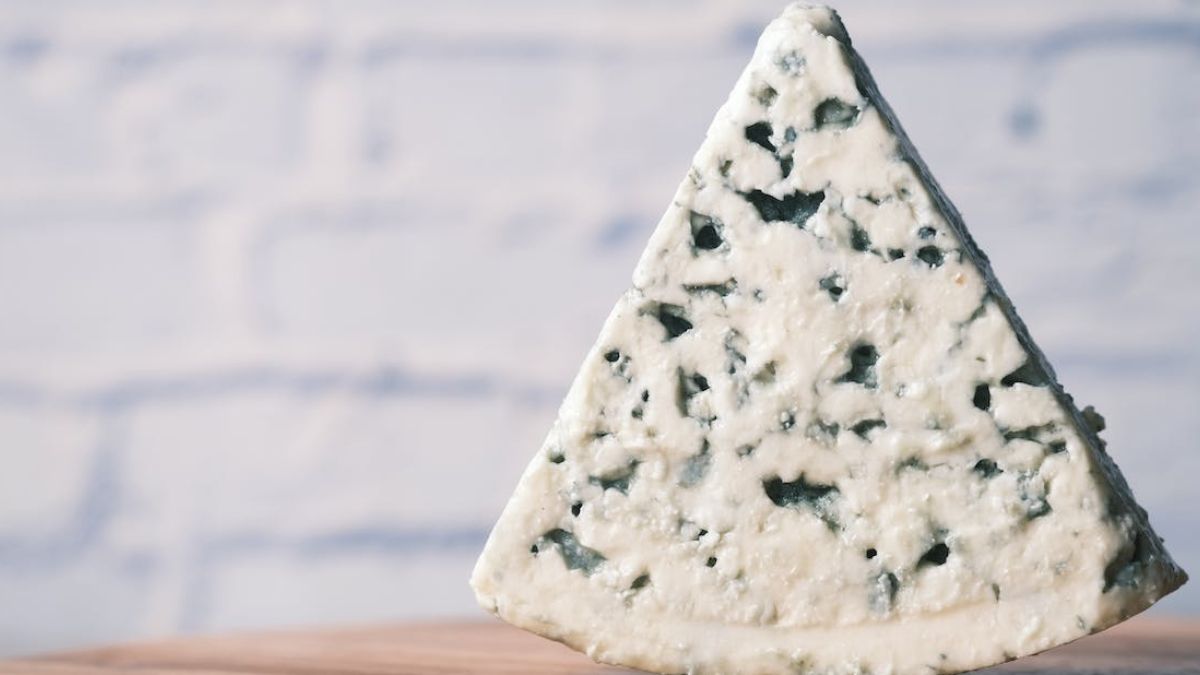Blue cheese, so named for the distinctive blue veins that run through it, is a delicious and visually striking cheese. The cheese’s long and interesting history is as intriguing as its delicious flavour. Here, we’ll learn about the evolution of blue cheese, its many subtypes, and its many culinary applications.
I. The History of Blue Cheese
Records of blue cheese’s existence date back to the Roman Empire, indicating that it has been present for quite some time. During the ageing process, mould spores from bread or grapes may have gotten into the cheese, leading to the inadvertent creation of blue cheese.
Blue cheese as we know it now originated in the 7th century, when French shepherds discovered Roquefort cheese with its distinctive flavour and texture. It was produced with sheep’s milk and matured in the Roquefort-sur-Soulzon caverns, where blue veins developed from mould spores in the air.
Blue cheese’s popularity grew throughout Europe and finally found its way to the United States. These days, you can find blue cheese just about anywhere, and there are innumerable different kinds to try.
II. Varieties of Blue Cheese
Blue cheese comes in a wide variety, each with its own distinct taste and texture. Some of the most well-liked types include the following:
- Roquefort: Made in France from sheep’s milk, this is the authentic cheese. The flavour is sour and salty, and the texture is crumbly.
- Gorgonzola: Made from cow’s milk, this Italian cheese has a softer, creamier flavour than Roquefort.
- Stilton: The cow’s milk in this English cheese gives it a rich, creamy texture and a flavour that’s somewhat sweet at the end.
- Danish: This cheese, also known as Danablu, hails from Denmark and is gentler and creamier than other variants.
Other examples of cheese from around the world are the Spanish Cabrales, the French Bleu d’Auvergne, and the American Maytag Blue.
III. Culinary Uses of Blue Cheese
There is a wide range of recipes that can benefit from the use of cheese. Some common ways to include cheese into your cooking are:
- Salads and dressings: Salad dressings frequently include cheese for its acidic, savoury flavour. Nuts, fruit, and bacon are just some of the things that go well with it.
- Appetizers and snacks: You can spread blue cheese on crackers or bread, or use it as a dipping sauce for some wings or vegetables.
- Main dishes and sauces: Steak and burgers benefit greatly from the addition of cheese, and the cheese is also frequently used in pasta dishes and sauces.
- Desserts: On a cheese plate, blue cheese complements sweet fruits like figs and pears, and it can also be used to offset the sweetness of sweet sweets like cheesecake.
Wedge salads, made with a quarter head of iceberg lettuce, crumbled cheese, bacon, and a creamy dressing, are a classic cheese dish. Grilled steak or lamb is enhanced by the addition of a cheese sauce, and the two go well together.
Cheese is also frequently used as part of an attractive cheese plate or board that also features a variety of other cheeses, as well as fruits, nuts, and crackers.
IV. Tips for Storing and Serving Blue Cheese
It’s vital to keep cheese at the perfect temperature and serve it at the right time to get the most out of it. Some advice is as follows:
- Keep Cheese cold by storing it in an airtight container or by wrapping it with foil. To avoid contaminating other foods, it should be stored separately.
- It’s best to serve cheese at room temperature, as this brings out the best in its flavour and scent. Take it out of the fridge about an hour before you plan to serve it.
- Red wine, beer, honey, almonds, and fruit are just some of the foods and drinks that go well with cheese. Try out several combinations until you find one that works for you.
- Don’t toss out that extra cheese just yet! You may crumble it over a salad or pizza, or use it to make a tasty cheese sauce for pasta or meat.
Conclusion
Overall, blue cheese’s robust, acidic flavour and striking appearance have made it a global favourite.Cheese has been a favourite among cheese eaters for centuries, and it will continue to be so because of its long history, wide variety, and versatile culinary applications.











